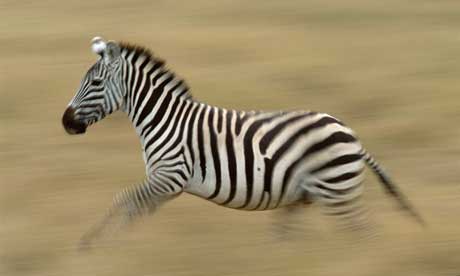
Snapping the world's wildlife is no mean feat. You have to make your own luck and be a quick-draw photographer, says Steve Davey
Whether you’re photographing herons on the Thames or lions in the Serengeti, arguably the most difficult thing about wildlife photography is the ‘field craft’ – getting in the right position. You don’t only have to find the animals to photograph them, you have to get in a good position to achieve a good picture.
Luckily, you don’t have to learn about every animal you want to photograph: there are plenty of expert guides around the world who know their environments. If you are going on a wildlife tour, check how much time will actually be spent looking for animals. On an African safari, if you’re not heading out to see animals until after breakfast you’re not really going to see much. Instead, consider a dedicated photographic safari; these trips are set up to maximise wildlife photographic opportunities.
However, don’t just think of wildlife photography in terms of the classic African safari. Animals in urban environments can be more used to people so you can often snap without disturbing them. There are also plenty of opportunities for close-up wildlife photography. If you are shooting with a digital SLR you might need a special close-up lens, but many compact cameras have a close-up mode that will allow you to fill the frame with even the tiniest subjects.
Do try to capture an animal’s behaviour rather than just them sitting there or, worse still, their backside as they are running away.
Always be prepared. If you are on a wildlife cruise or drive you never know when you’ll come across an animal. Having your camera switched on and ready can make all the difference.
Make sure that you have a fully charged battery and a memory card with plenty of space. If you’re in a vehicle, a power inverter will allow you to recharge a battery from the cigarette lighter. If shooting on manual, periodically check the exposure, especially if the light conditions are changing.
As well as being at the ready, look after your equipment. Never leave a camera loose on the seat of a car or boat: it will fall off eventually. Be extra careful if you have a big telephoto lens: this can put a strain on the lens mount, especially if knocked or dropped.
Even when shooting relatively large animals, you’ll usually need a telephoto lens to get a close-up image. If photographing birds, you will definitely need a powerful lens, which can take some time to get used to. Get the lens in advance and practise – don’t just take your new telephoto out of the box on the first day of the safari of a lifetime.
Camera shake will appear greater when using a telephoto – you’ll need to use a faster shutter speed: at least 1/750 second if you are handholding a 400mm lens on a digital SLR with a crop sensor. You can set a slower speed if you use a monopod. This one-legged support does a good job of steadying the camera but still allows mobility.
Many modern lenses incorporate vibration reduction, allowing you to handhold a lens with a much slower shutter speed. If you are shooting from a vehicle, make sure that the engine is switched off. Engine vibration can cause camera shake, especially if the lens is touching the body of the vehicle.
Focus is also important if you are shooting with a telephoto lens as they have a very shallow depth of field. To ensure your subject is pin sharp, use a wide pattern of focus sensors to pick up a subject that isn’t just in the middle of the frame, and a predictive continuous autofocus mode if your subject is moving. This means the camera will try to lock on to any moving subject and attempt to predict where it will be when you take the picture for more accurate focusing.
If you don’t have a telephoto lens or are shooting with a compact camera where a telephoto setting won’t be powerful enough, don’t just take a picture with a small animal dead in the centre of the frame. Compose the picture so that it shows the animal in its environment. This might be an elephant against the walls of the Ngorongoro Crater, or a polar bear amid ice flows of the frozen Arctic.
Wildlife photography is more than just clicking away at animals or even just freezing action with a fast shutter speed. Use all of your photographic techniques.
Experiment with recording movement with panning – moving the camera during the exposure to blur the background, not the subject. Also remember your composition, and try to create pictures with meaning by combining objects – animals, vehicles, etc – within the frame.
Your pictures will look better if you shoot in the early morning and late afternoon light. Also, in many parts of the world – notably Africa – animals are particularly languid in the heat of the day, so it’s best avoided.
Good wildlife photography takes luck but, as with many disciplines of photography, you make your own luck – partly through hard work and dedication, and partly by practising and honing your photographic skills until they are second nature.
This issue’s assignment: you don’t have to fly all the way to Africa to shoot wildlife pictures: you can find creatures in your town, surrounding countryside and even your garden. The advantage of shooting close to home is that you can get to know your subjects and their habits, meaning you’ll be able to take pictures of them showing more natural behaviour.
Spend a bit of time snapping your local wildlife and you will see the improvement in your photography when you get on the road.